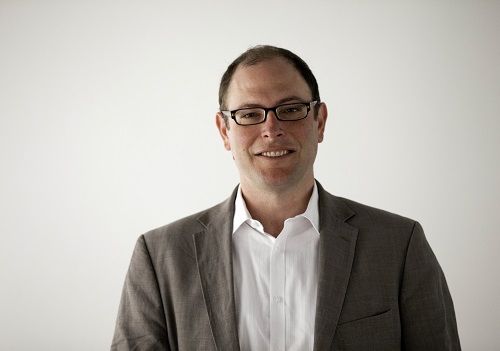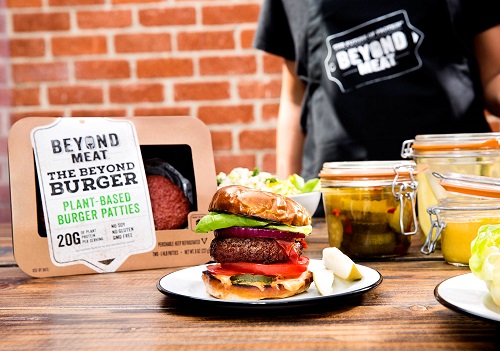The recent Beyond Meat (BYND) IPO has investors salivating, but the impact of the plant-based, meat-substitute company extends well beyond Wall Street. That’s because some savvy investors are channeling their IPO windfall into impact investments that are driving social and environmental innovation.
Here’s the thing: some of Beyond Meat’s earliest investors made seed investments using charitable assets at ImpactAssets, an impact investing pioneer with over $500 million in its donor-advised fund. All told, the IPO turned $1.1 million in philanthropic investments into $23.6 million of charitable dollars, based on BYND’s price at the end of the initial day of trading.
The Beyond Meat investment is one of nearly 600 impact investments made with philanthropic capital at ImpactAssets. We spoke with CEO Tim Freundlich to learn more about the vision of ImpactAssets, the Beyond Meat phenomenon, and how charitable assets can be a critical source of risk-tolerant catalytic capital for early-stage impact investments.
What’s the mission of ImpactAssets, how long has it been around, and what’s its impact so far?
In 2010, ImpactAssets was spun out of Calvert Impact Capital in recognition of the growing need to increase flows of capital to the world’s greatest challenges. The ImpactAssets Giving Fund, a donor advised fund. was created of, by and for impact Investors to provide a flexible solution for the innovative and creative impact investing that philanthropists were seeking. To this end our north star has always been to provide unparalleled access into social entrepreneurs and fund managers best positioned to tackle these challenges.
Since its inception, ImpactAssets has become the leading facilitator of direct impact investing within donor advised funds. Our portfolio represents more than 550 impact investment positions and $700 million in assets. We also connect donors to a rotating offering of private impact funds, as well as a broader asset platform, all fully aligned to the UN Sustainable Development Goal framework.
What does the Beyond Meat investment tell us about the potential of philanthropic capital?
The Beyond Meat investment is a bellwether event in impact investing and a shining example of how philanthropic capital can be invested in a sustainable business solution. The impact of the investment was amplified through market rate financial returns to date of roughly 28 times and will be recycled for future investment and granting almost $30 million in upside on ImpactAsset’s $1.1 million original investment.
Explain why charitable assets can be a critical source of risk-tolerant catalytic capital to early-stage impact investments.
Donor-advised funds (DAF) are a great source of flexible, patient, and even non-commercial capital, and can play a critical role in helping innovative, early-stage companies move through their growth. Traditional VC funds are more likely to provide businesses with market-rate seeking, commercial capital than more risk-tolerant, patient capital and grants, but both are critical to generating the impact that’s not always achievable alongside commercial returns – such as bearing the risks of early-stage innovation, seeding new sectors, and fueling impact in the toughest markets.
At ImpactAssets, we have found that our donors are often willing to take greater risk with their charitable endowment capital, particularly when there is the prospect of significant positive impact. Our donors see their assets as part of a pool of patient capital that could be put to work now — invested in breakthrough solutions to some of the world’s biggest global challenges, and also allocated side-by-side to support organizations that also benefit from charitable donations.
That catalytic power, multiplied by hundreds of thousands of DAF donors, is a formidable funding source that could be put to work as social enterprises and organizations tackle the critical systemic risks (and opportunities) that are growing every day.
Can you share a couple examples of impact investors who have made successful impact investments?
When Honest Tea Founder Seth Goldman sold his company in 2011 to CocaCola, he donated appreciated stock into the ImpactAssets donor-advised fund (DAF), thereby taking a tax deduction for the stock’s full market value without having to pay capital gains taxes for the growth of the value of the stock. But instead of buying an island or a fast car, Goldman put his money to work helping other social entrepreneurs build businesses with impact by moving resources into his charitable pocket at ImpactAssets.
One of his first investments: was Happy Baby, a firm that was launched on Mother’s Day by a new mom, Shazi Visram. When she sold Happy Baby to Danone in 2013, Visram followed Goldman’s lead, opening a DAF and funding the next generation of social entrepreneurs. One of her initial investments: Epibone, a biotech firm that enables patients to grow their own bones.
RedWave Energy, Inc., is another great example. Impact investor Liesel Pritzker Simmons, a co-founder and principal of Blue Haven Initiative, used her ImpactAssets donor advised fund, to invest in a Series B financing of RedWave, a pioneering Chicago-based start-up that generates electricity from inefficient fossil fuel processes using a novel industrial waste heat to energy technology, philanthropic investment helped unlock a full $5.85 million financing round.
What does the future of philanthropic capital look like? What are the challenges ahead?
DAF sponsors like ImpactAssets are in the early days of mobilizing impact investment opportunities for their clients as the marketplace of DAF sponsoring organizations becomes increasingly competitive and DAF clients learn more about their options to make social impact with market-based solutions.
However, time-sensitive social causes in complex industries – such as healthcare, energy, infrastructure, and education – demand intervention from these asset owners and managers today. Without donor-advised fund participation, some of the world’s most innovative solutions will fail to survive the long and complex transition from idea to impact.


